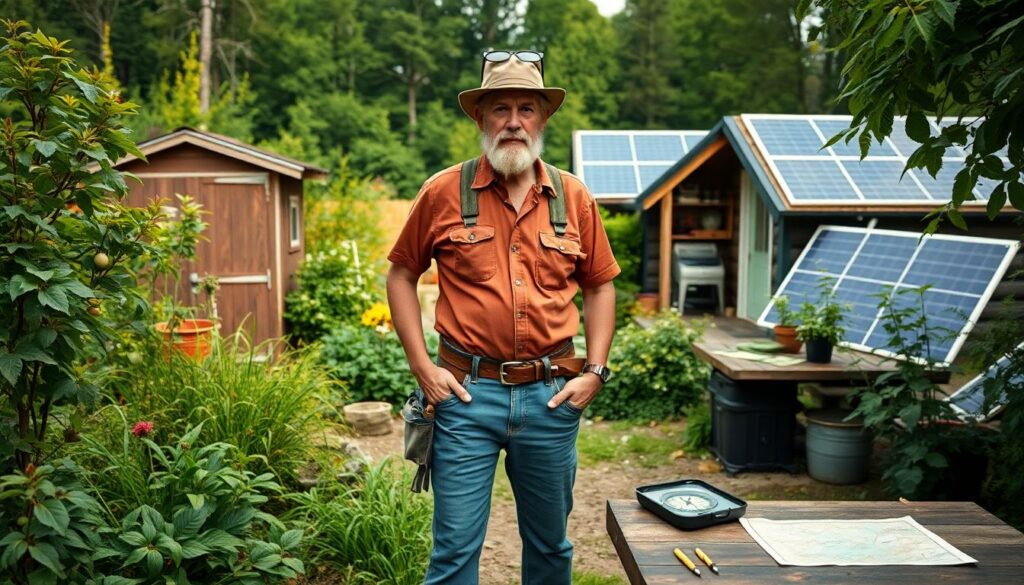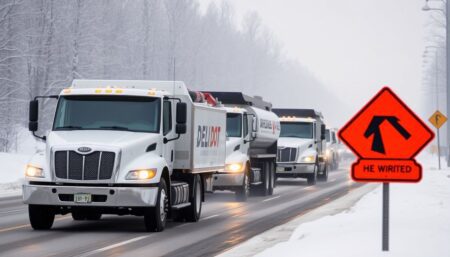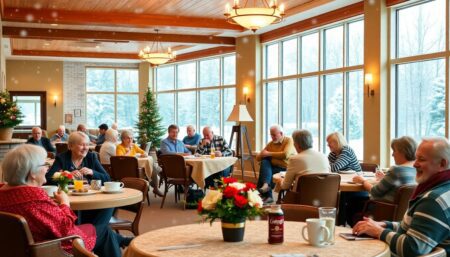In the dynamic world we live in, being prepared for the unexpected has become more than just a smart idea; it’s a necessity. This is where the concept of ‘prepping’ comes into play, a practice that combines survival skills, self-sufficiency, and a proactive approach to potential challenges. But where does one start on this journey towards self-reliance? This article, ’10 Crucial Skills Every Prepper Should Master’, is your comprehensive guide, designed to equip you with the essential knowledge and abilities to navigate various scenarios with confidence.
According to a survey by the National Center for Disaster Preparedness, only 37% of Americans have an emergency supply kit, and only 14% have a family emergency plan. These statistics highlight a significant gap in our collective preparedness, a gap this article aims to bridge. By the end of this read, you’ll not only agree that these skills are indispensable but also promise to incorporate them into your lifestyle, and we’ll preview what lies ahead in our detailed exploration.
Imagine this: you’re in the midst of a power outage, a sudden storm, or even a more catastrophic event. Your immediate surroundings are chaotic, and resources are scarce. Now, imagine you’re equipped with the skills to not just survive, but thrive in such circumstances. You know how to purify water, start a fire without matches, navigate without GPS, and even administer basic first aid. This is the power of prepping, and this is what we’re here to explore.
So, whether you’re a seasoned prepper looking to refine your skills or a beginner taking your first steps into this world, this article is your roadmap. We’ll delve into the art of self-sufficiency, discuss the importance of prepper training, and most importantly, provide practical, actionable advice on the 10 crucial skills every prepper should master. So, buckle up, and let’s embark on this exciting journey towards self-reliance and preparedness.
Master These 10 Essential Skills for Self-Sufficiency and Survival
Embarking on a journey towards self-sufficiency and survival is an exciting and empowering endeavor. Imagine the satisfaction of knowing you can navigate any challenge that comes your way, from the mundane to the extraordinary. To achieve this, there are ten essential skills that you should master. These skills are not just about surviving in the wilderness or facing disasters; they are about living a life of independence, resilience, and adaptability. Think of them as the building blocks of your personal fortress of solitude, where you are the architect, the builder, and the guardian. The first skill is the ability to assess your surroundings, to read the landscape like a book, and to understand the language of nature. This is not just about knowing which plants are edible or which animals are dangerous, but about understanding the interconnected web of life and how you fit into it. The second skill is the ability to provide for your basic needs. This includes knowing how to find or purvey clean water, how to build a shelter that keeps you safe and warm, and how to start a fire that can cook your food and keep you company on cold nights. The third skill is the ability to navigate, to find your way in the world without relying on GPS or Google Maps. This is about understanding the sun, the stars, the wind, and the terrain, and using them to guide you on your journey. The fourth skill is the ability to communicate effectively, to express yourself clearly and concisely, and to listen actively to others. This is not just about speaking and listening, but about understanding, empathy, and connection. The fifth skill is the ability to problem-solve, to think critically and creatively, and to find solutions to challenges that others might deem insurmountable. The sixth skill is the ability to manage your resources, to use what you have wisely and efficiently, and to make the most of every opportunity. The seventh skill is the ability to maintain your physical and mental health, to understand your body’s needs and how to meet them, and to cultivate a strong, resilient mind. The eighth skill is the ability to adapt, to change and grow in response to new circumstances, and to embrace the unexpected as an opportunity for learning and growth. The ninth skill is the ability to collaborate, to work with others towards a common goal, and to understand that sometimes, two heads are better than one. The tenth and final skill is the ability to teach and share your knowledge with others, to pass on the skills and wisdom you’ve gained, and to create a community of self-sufficient, resilient individuals. Mastering these skills is not a destination, but a lifelong journey. It is a journey of self-discovery, of growth, and of empowerment. So, are you ready to take the first step? The world is waiting, and it’s full of challenges and opportunities. Embrace them, learn from them, and let them make you stronger. After all, the journey of a thousand miles begins with a single step, and the path to self-sufficiency and survival begins with these ten essential skills.
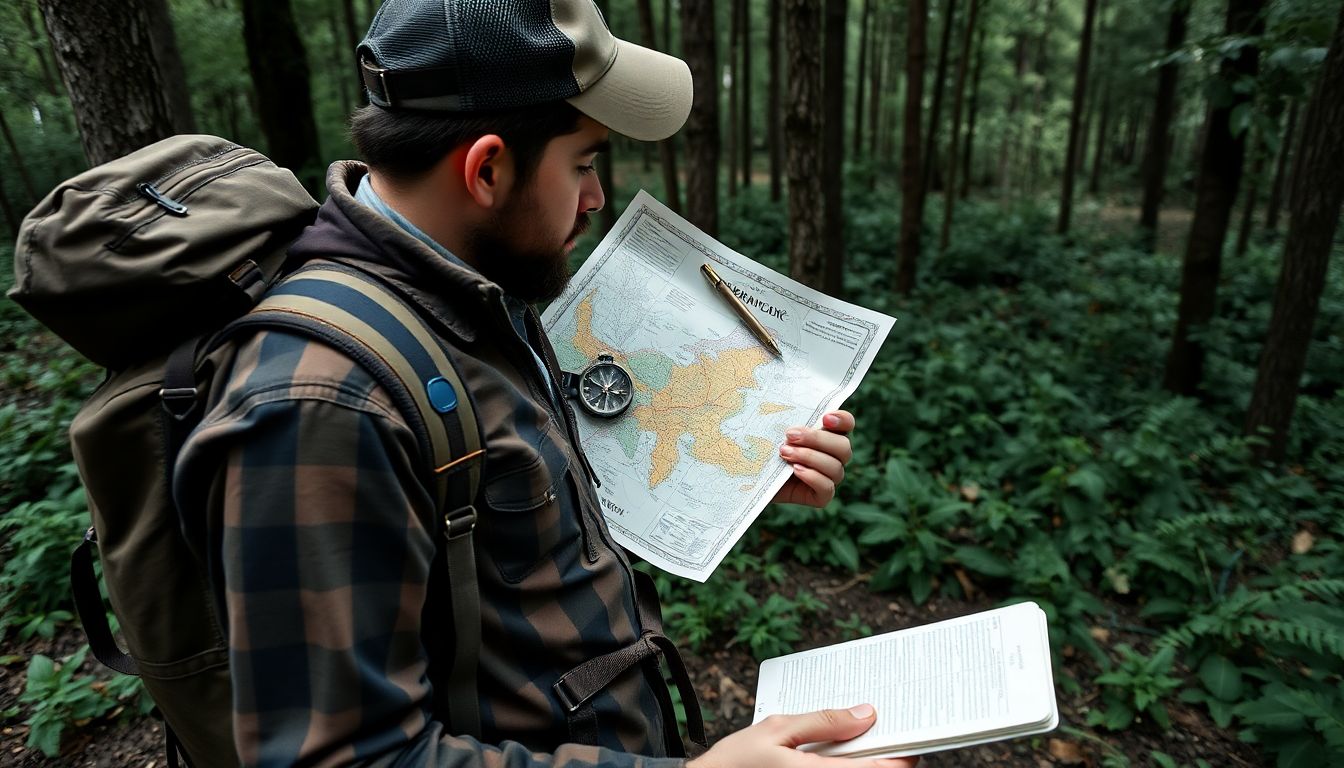
Understanding Your Surroundings
Understanding your surroundings is a crucial skill, especially when venturing into the great outdoors. Let’s delve into the importance of land navigation, reading maps, and using a compass, which are the first steps in orienting yourself in an unfamiliar environment.
Land navigation is the art of determining one’s position and planning a route to a destination using a map and compass. It’s not just about reaching your campsite, but also about knowing how to get back to safety if you find yourself lost. A map is a visual representation of the land, and reading it involves understanding symbols, scales, and contours. It’s like having a bird’s eye view of your journey. A compass, on the other hand, is a tool that helps you determine direction. It’s a simple device, yet it can be a lifesaver when used correctly.
But understanding your surroundings isn’t just about knowing where you are and where you’re going. It’s also about knowing what’s around you. This is where the skill of identifying edible plants and safe water sources comes in. The wild is full of resources, but not all of them are safe to consume. Learning to identify edible plants can provide you with a source of food, while knowing how to find safe water can keep you hydrated. Remember, when in doubt, leave it out. It’s always better to be safe than sorry.
Observing and adapting to your environment is another key aspect of understanding your surroundings. This is where the concept of ‘pattern of life’ comes into play. Every environment has its own rhythm, its own pattern of life. By observing this pattern, you can learn a lot about your surroundings. For instance, animal tracks can tell you about the wildlife in the area, while the direction of the wind can tell you about the weather. The key is to be observant and to adapt your behavior based on what you observe. This is not just about survival, but also about coexisting with nature in a responsible and respectful way.
In essence, understanding your surroundings is about more than just knowing where you are. It’s about knowing how to navigate, how to find resources, and how to adapt to your environment. It’s about being one with nature, not just a visitor passing through.
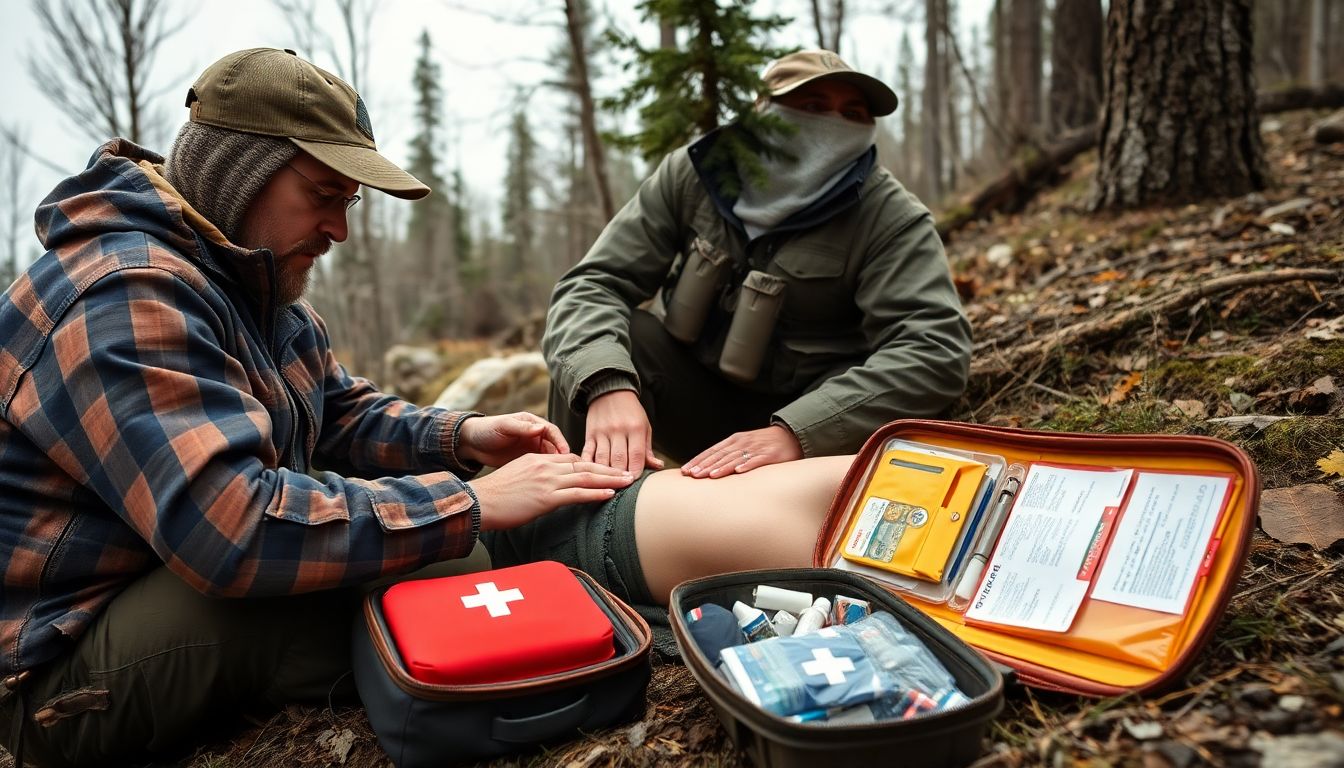
First Aid and Medical Knowledge
First aid training and a well-stocked first aid kit are indispensable tools for ensuring the health and safety of ourselves and our loved ones, especially in survival situations. First aid training equips us with the knowledge and skills to provide immediate care and treatment for injuries and ailments, potentially saving lives and preventing further harm. A comprehensive first aid kit, on the other hand, is a portable collection of medical supplies and medications that enables us to treat a wide range of common injuries and ailments.
Common injuries and ailments that can be treated with first aid include cuts, burns, fractures, sprains, strains, and various types of wounds. In a survival situation, it’s crucial to know how to clean and dress wounds to prevent infection, how to apply pressure to stop bleeding, and how to provide support for fractures and sprains. Additionally, knowing how to treat symptoms of illnesses such as fever, dehydration, and allergic reactions can be lifesaving.
Triage is a critical concept in first aid that involves prioritizing medical needs based on the severity of injuries or illnesses. In a survival situation, it’s essential to assess the condition of all individuals and provide care based on who needs it the most. This may involve treating life-threatening injuries or illnesses first, even if it means delaying treatment for less severe conditions. Here’s a simple triage system to follow:
- Immediate: Treat life-threatening conditions such as severe bleeding, difficulty breathing, or loss of consciousness first.
- Delayed: Treat injuries or illnesses that are not immediately life-threatening but still require prompt attention, such as broken bones or severe burns.
- Minor: Treat minor injuries or illnesses that can wait for professional medical care, such as small cuts or scrapes.
By understanding and applying these principles, we can be better prepared to handle medical emergencies and ensure the well-being of ourselves and others in survival situations.

Fire Starting and Shelter Building
In the great outdoors, two fundamental skills that can mean the difference between a comfortable night under the stars and a potentially life-threatening situation are fire starting and shelter building. Let’s delve into these essential techniques, starting with the art of fire making.
Fire starting is a multifaceted skill that requires adaptability, as conditions can vary greatly. One of the most primal methods is friction-based, using techniques like the hand drill or bow drill to create an ember. The hand drill involves spinning a stick between the palms of your hands, while the bow drill uses a bow to spin a stick held in place by a socket made from a piece of wood or a stone. Both methods require patience and practice, but they can be incredibly rewarding when a small wisp of smoke signals success.
Nature provides an abundance of materials that can aid in fire starting. Dry tinder, such as dead grass, leaves, or pine needles, is essential for getting a fire going. Once you have a small flame, you can add kindling, like small twigs, to help it grow. Larger pieces of wood, known as firewood, can then be added to sustain the fire. Remember, it’s crucial to choose materials that are dry and dead, as green wood can be difficult to burn.
Another important aspect of survival in the wild is shelter building. A well-constructed shelter can protect you from the elements, provide insulation, and even reflect body heat back at you. The first step in building a shelter is to find a suitable location, preferably one that’s flat, dry, and protected from wind and rain. Once you’ve found your spot, you can begin to gather materials. Natural resources like branches, leaves, and pine needles can be used to create a sturdy structure.
One simple yet effective shelter is the debris hut. To build one, start by finding a long, sturdy ridgepole to serve as the backbone of your shelter. Next, lay shorter poles on either side of the ridgepole at a 45-degree angle to create a frame. Fill in the gaps between the poles with smaller branches, then cover the entire structure with debris like leaves and pine needles. This will insulate your shelter and help to retain heat. Finally, line the inside of your shelter with more debris to create a comfortable bed.
Remember, the key to both fire starting and shelter building is preparation and practice. The more you hone these skills in controlled environments, the better equipped you’ll be to handle unexpected situations in the wild. So, grab your matches, head outdoors, and start practicing. After all, there’s no better feeling than the warmth of a fire you’ve built with your own hands, or the comfort of a shelter you’ve constructed with your own two arms.
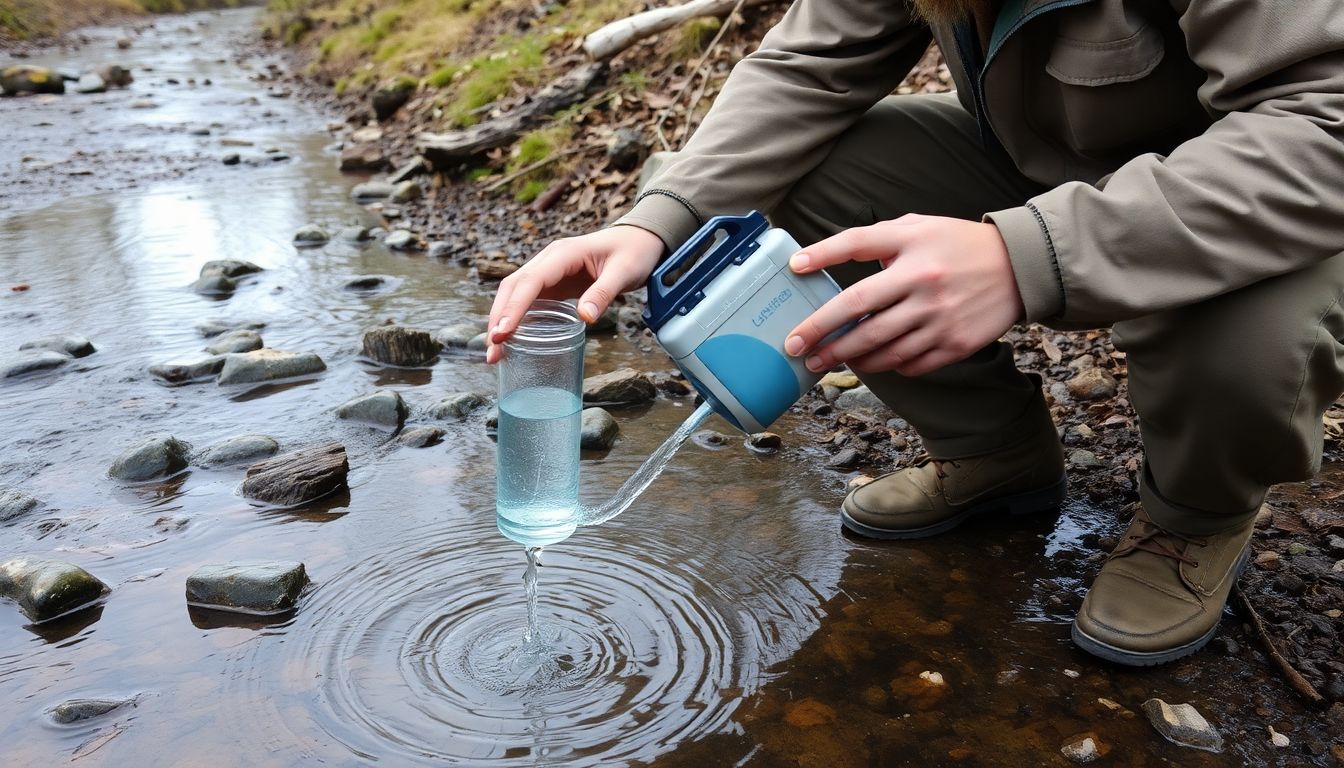
Water Purification and Sanitation
Clean water is an indispensable resource for human survival, yet it’s often taken for granted. In a survival situation, access to clean water is paramount, as contaminated water can lead to life-threatening illnesses. This is where understanding water purification and sanitation becomes crucial.
The importance of clean water cannot be overstated. It’s not just for drinking; it’s essential for cooking, cleaning, and maintaining personal hygiene. Contaminated water can harbor harmful pathogens like bacteria, viruses, and parasites, which can cause diseases such as diarrhea, cholera, and typhoid. These illnesses can debilitate individuals, making it difficult to navigate a survival scenario.
So, how does one ensure clean water in a survival situation? There are several methods of water purification, each with its own advantages and limitations.
Boiling is one of the simplest and most effective methods. It kills all pathogens, making water safe to drink. To boil water, bring it to a rolling boil for at least one minute. At higher altitudes, where water boils at lower temperatures, boiling should be done for three minutes.
Filtration is another method that removes many, but not all, pathogens. It’s often used in conjunction with other methods like boiling or purification tablets. There are various types of filters, from simple cloth filters to complex systems that use activated carbon or ceramic filters.
Purification tablets are a convenient option, especially for short-term survival situations. They contain chemicals like iodine or chlorine dioxide that kill pathogens. However, they can impart a slight taste to the water and may not be suitable for everyone, particularly those with thyroid conditions who should avoid iodine.
Sanitation and hygiene are equally important in a survival situation. This includes proper disposal of waste, maintaining cleanliness of living spaces, and practicing good hand hygiene. Always wash your hands with soap and clean water before preparing food or eating, and after using the toilet.
In conclusion, access to clean water and proper sanitation are not luxuries in a survival situation; they are necessities. Understanding and implementing these practices can significantly improve one’s chances of survival and overall well-being.
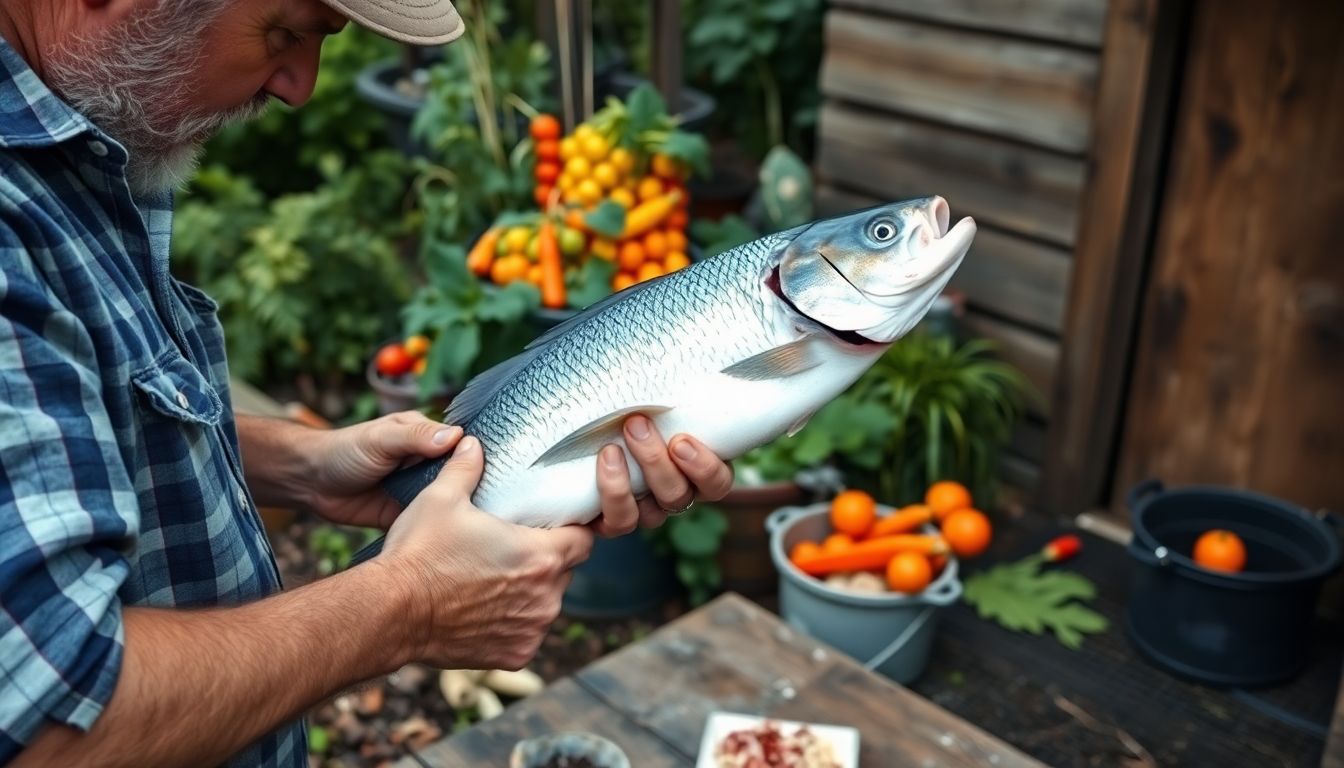
Food Acquisition and Preservation
In the vast pantry of nature, there are numerous ways to acquire and preserve food. Let’s delve into the ancient arts of hunting, fishing, trapping, and foraging, followed by the crucial aspect of food preservation.
Hunting, fishing, and trapping are time-honored methods of procuring protein. Hunting requires patience, skill, and a deep understanding of the animal’s behavior and habitat. It’s essential to use ethical hunting practices, ensuring a clean kill and minimizing suffering. Fishing, on the other hand, demands knowledge of the local waterways, fish species, and their habits. Trapping, while controversial, can be a sustainable way to manage pest populations and provide food, provided it’s done humanely and responsibly.
Foraging, the practice of gathering wild plants for food, is a rewarding and often overlooked skill. It’s crucial to learn from an expert or use a reliable guide to avoid toxic plants. Some common edibles include dandelions, clover, and purslane. Remember, never over-harvest from a single location to ensure the plant’s survival.
Food preservation is not just about extending the shelf life of food; it’s about respecting the resources we’ve been given. The most basic method is refrigeration, which slows bacterial growth. Canning, a process involving heat and an airtight seal, can preserve food for years. Fermentation, an ancient technique, uses beneficial bacteria to preserve and enhance food, as seen in sauerkraut and kimchi. Dehydration, by removing moisture, prevents bacterial growth, as seen in dried fruits and jerky. Salting and smoking are other traditional methods that draw out moisture and create an inhospitable environment for bacteria.
Storing food for long-term use requires careful planning and rotation. A pantry inventory, along with first-in, first-out (FIFO) principle, ensures that older items are used before they expire. Cool, dry, and dark conditions are ideal for long-term storage. Rotate stock regularly to prevent spoilage and waste. Always check for signs of spoilage before consuming, as even preserved food can degrade over time.

Self-Defense and Security
Self-defense and security are not merely buzzwords, but essential life skills that everyone should consider learning. In today’s world, it’s crucial to be proactive about our safety and that of our loved ones. Self-defense isn’t just about physical prowess; it’s about understanding your environment, reading situations, and being prepared to act if necessary. This is where situational awareness comes into play.
The first step in self-defense is to stay alert and aware of your surroundings. This means being mindful of your environment, the people around you, and any potential hazards. It’s about being present and engaged, not distracted by your phone or lost in thought. It’s about trusting your instincts; if something or someone makes you uncomfortable, it’s okay to remove yourself from the situation.
Now, let’s talk about physical self-defense. This isn’t about becoming a martial arts expert overnight, but rather learning basic techniques that can help you defend yourself if needed. There are numerous self-defense classes available that teach practical skills, such as striking, blocking, and escaping holds. These classes often emphasize using your body’s natural strengths and teaching you how to defend against common attacks.
Weapons training is another aspect of self-defense. This could range from learning to use a firearm safely and responsibly, to carrying a pepper spray or a tactical pen. The key here is to understand that a weapon is a tool, and like any tool, it’s only effective if you know how to use it. Always remember, a weapon is not a substitute for situational awareness or good judgment.
In a survival situation, maintaining security is paramount. This means having a plan, knowing your surroundings, and being prepared to adapt. It means having a bug-out bag ready with essential supplies, knowing how to navigate without technology, and understanding basic first aid. It means knowing how to barricade a door, how to signal for help, and how to find water and shelter.
Self-defense and security are not one-size-fits-all. What works for one person might not work for another. The key is to find what works for you, to learn and practice, and to never stop being aware. Because in the end, your safety and security are your responsibility, and that’s a powerful thing.
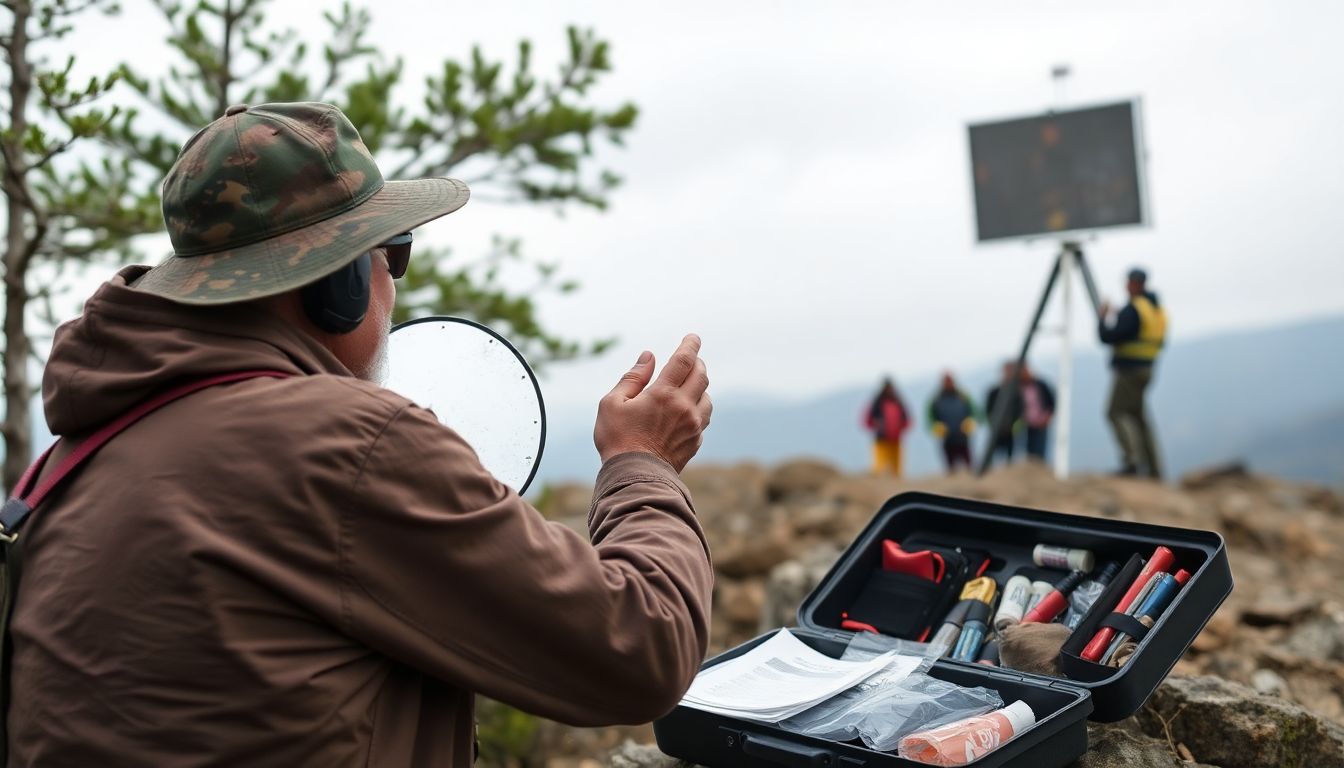
Communication and Signaling
Communication, in a survival situation, is not just a luxury, but a necessity. It’s our lifeline to the outside world, a beacon of hope in the face of adversity. Staying informed is crucial; it helps us make better decisions, reduces anxiety, and keeps our spirits high. In the wilderness, information can come from various sources
- weather patterns, animal behavior, or even the terrain itself. Being attuned to these signs can mean the difference between life and death.
Signaling, a form of communication, is our way of reaching out, of saying, ‘I’m here, I need help.’ It’s a powerful tool that has saved countless lives. There are two main types of signals
- visual and auditory.
Visual signals are often the most effective during the day. They can be created using mirrors, shiny objects, or even bright clothing. The key is to create something that can reflect sunlight and catch the eye of a potential rescuer. Remember, the signal should be something that can be seen from a distance and repeated at regular intervals.
At night, or in low visibility, auditory signals come into play. Whistles, horns, or even shouting can be used. The sound should be loud, distinct, and repeated at regular intervals. It’s important to conserve energy, so use these signals sparingly and strategically.
Here are some steps to use signals effectively:
- Choose a signal that is loud, bright, or distinct.
- Use it repeatedly and at regular intervals.
- Change the signal to keep it interesting and to show that it’s not a natural occurrence.
- Use multiple signals to increase the chances of being noticed.
Remember, the goal is to create something that is out of the ordinary, something that will catch the eye or ear of a potential rescuer. It’s a simple act, but one that can save a life.
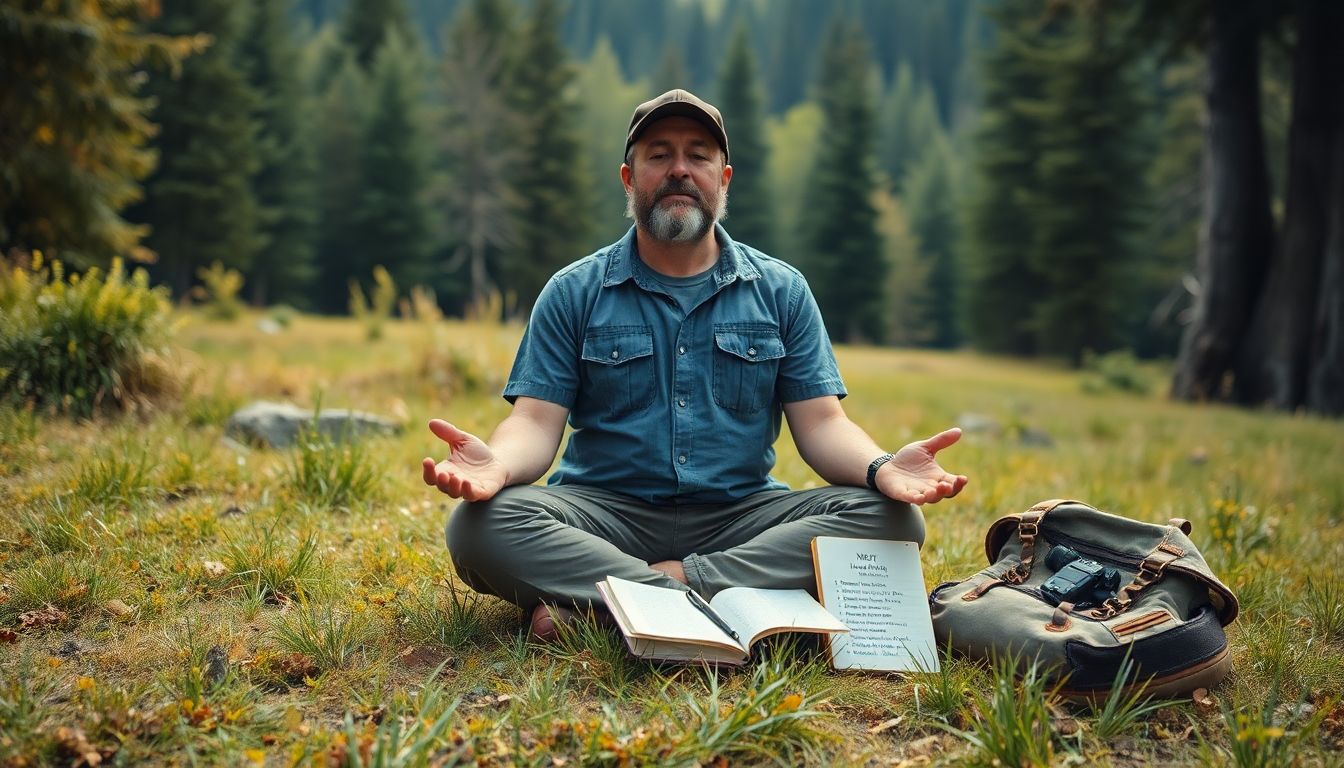
Mental Toughness and Resilience
Mental toughness and resilience are often the unsung heroes in survival situations, yet they are as crucial as any physical skill or tool. Imagine yourself lost in a dense forest, with night falling and resources dwindling. It’s easy to succumb to fear and despair, but those who survive are the ones who can maintain a positive attitude and mental clarity. This is where mental preparation comes into play.
Mental preparation is not about being optimistic to the point of denial. It’s about acknowledging the harsh reality of your situation, accepting it, and then choosing to focus on what you can control and improve. It’s about breaking down the situation into manageable tasks and tackling them one at a time. For instance, instead of thinking ‘I’m lost in the woods and might die’, think ‘I need to find shelter before nightfall’.
The concept of ‘grit’ is closely related to mental toughness. Grit is not just about perseverance; it’s about passion and long-term goals. It’s about understanding that setbacks are not failures, but opportunities to learn and grow. In a survival situation, grit helps you push through fatigue, hunger, and fear to keep moving towards your goal.
Developing mental toughness is a journey that starts long before you find yourself in a survival situation. It involves cultivating a growth mindset, where challenges are seen as opportunities for growth rather than threats. It involves setting and working towards long-term goals, even when progress seems slow. It involves practicing mindfulness and self-compassion, so you can stay calm and focused under pressure.
Here are some steps to help you develop mental toughness:
- Set clear, achievable goals and break them down into smaller tasks.
- Practice positive self-talk. Instead of saying ‘I can’t do this’, say ‘I’ll find a way to do this’.
- Focus on what you can control. Worrying about what you can’t change only drains your energy.
- Practice mindfulness and meditation to improve your focus and calmness under pressure.
- Celebrate small victories. They might seem insignificant, but they can boost your morale and keep you going.
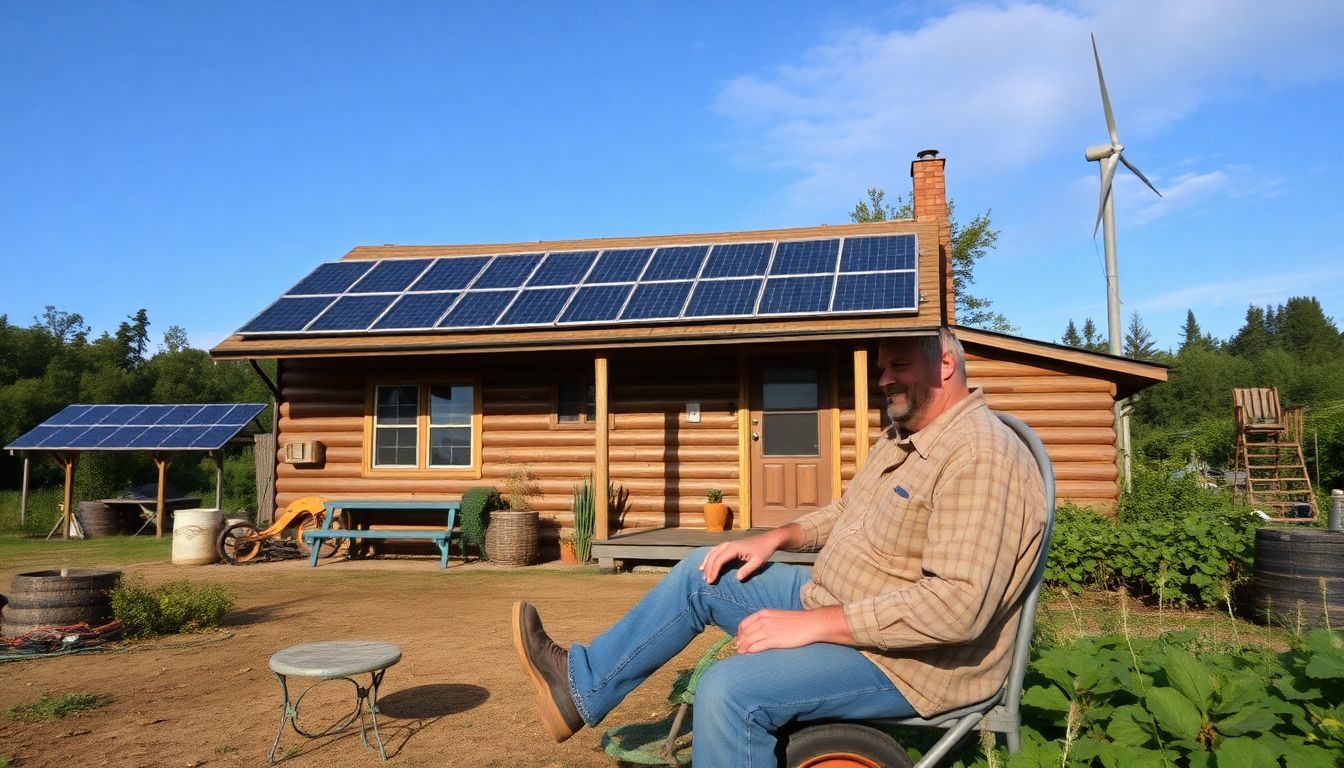
Off-Grid Living and Self-Sufficiency
Off-grid living, a lifestyle that’s gaining traction worldwide, is all about breaking free from the conventional grid of services and utilities. It’s about embracing self-sufficiency, sustainability, and a simpler way of life. Imagine a world where you generate your own power, grow your own food, and rely on the natural resources around you. That’s the essence of off-grid living.
Becoming self-sufficient is a journey, not a destination. It’s about taking small steps towards independence. The first and perhaps most significant step is to understand and harness the power of nature. This is where off-grid power sources like solar and wind power come into play.
Solar power is a clean, renewable, and increasingly affordable source of energy. It involves installing solar panels that convert sunlight into electricity. This electricity can then be stored in batteries for use at night or on cloudy days. Wind power, on the other hand, harnesses the power of wind using turbines. Both these sources require initial investment and maintenance, but they offer long-term savings and environmental benefits.
Living off-grid also means learning to live without modern conveniences. This doesn’t mean a complete return to the Dark Ages, but rather a shift in perspective. It’s about using energy-efficient appliances, conserving water, and reducing waste. It’s about cooking with wood or propane instead of electricity, and heating your home with a wood stove instead of central heating. It’s about growing your own food, raising livestock, and learning to preserve and store food.
Off-grid living is not just about survival, but also about sustainability and self-reliance. It’s about living in harmony with nature, not against it. It’s about creating a lifestyle that’s not just independent, but also interconnected with the natural world. It’s a journey that requires planning, patience, and a willingness to learn. But for many, it’s a journey that leads to a more fulfilling, sustainable, and self-sufficient life.

Community and Networking
In the vast, interconnected world we inhabit today, the significance of building a community and networking with like-minded individuals cannot be overstated. Community and networking are not merely buzzwords; they are lifelines that connect us, foster growth, and provide support in ways that are both tangible and intangible. They are the bridges that span the gaps between our unique experiences, ideas, and aspirations, allowing us to learn, collaborate, and thrive together.
For preppers, the importance of community and networking is amplified. Prepping is not just about stockpiling supplies; it’s about cultivating resilience, adaptability, and self-sufficiency. It’s about being prepared not just for oneself, but for one’s community. And that’s where networking comes in. By connecting with other preppers, we gain access to a wealth of knowledge, skills, and resources that can greatly enhance our preparedness journey.
So, how does one go about finding and joining prepper groups and communities? The journey begins with a simple yet powerful tool: the internet. Online platforms like forums, social media groups, and websites dedicated to prepping provide a global stage for like-minded individuals to connect. Websites such as Reddit’s r/preppers, Survivalist Boards, and PrepperNet are excellent starting points. Here, you can find discussions on a wide range of topics, from food storage and first aid to off-grid living and self-defense. Engaging in these discussions not only helps you learn but also allows you to introduce yourself and your interests, making it easier to find your tribe.
But online communities are just one side of the coin. Offline communities are equally, if not more, important. They provide opportunities for hands-on learning, skill-sharing, and building lasting relationships. To find offline prepper groups, consider the following steps:
- Check local meetup groups. Websites like Meetup.com often list prepper groups in various locations.
- Join local preparedness organizations. These groups often have a broader focus but can still provide valuable connections and resources.
- Attend prepping events and workshops. These can be a great way to meet other preppers and learn new skills.
- Reach out to local emergency management agencies. They often have resources and contacts for local prepper groups.
Remember, building a community is a two-way street. It’s not just about what you can gain, but also what you can contribute. Whether it’s your unique skills, experiences, or simply your time and energy, every contribution makes the community stronger. So, go ahead, start networking, and watch as your prepper journey transforms from a solo endeavor into a collaborative adventure.



